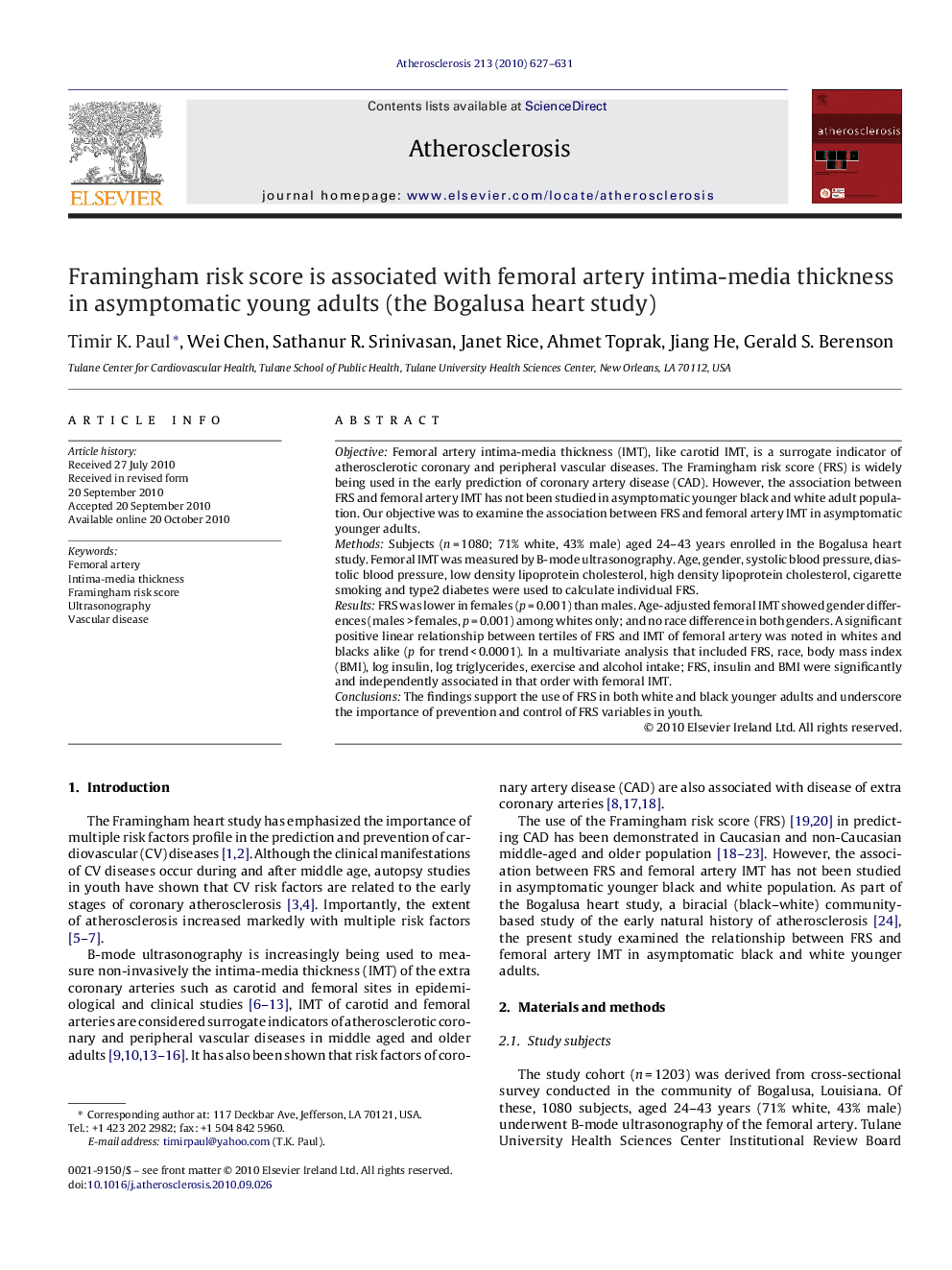| Article ID | Journal | Published Year | Pages | File Type |
|---|---|---|---|---|
| 2892969 | Atherosclerosis | 2010 | 5 Pages |
ObjectiveFemoral artery intima-media thickness (IMT), like carotid IMT, is a surrogate indicator of atherosclerotic coronary and peripheral vascular diseases. The Framingham risk score (FRS) is widely being used in the early prediction of coronary artery disease (CAD). However, the association between FRS and femoral artery IMT has not been studied in asymptomatic younger black and white adult population. Our objective was to examine the association between FRS and femoral artery IMT in asymptomatic younger adults.MethodsSubjects (n = 1080; 71% white, 43% male) aged 24–43 years enrolled in the Bogalusa heart study. Femoral IMT was measured by B-mode ultrasonography. Age, gender, systolic blood pressure, diastolic blood pressure, low density lipoprotein cholesterol, high density lipoprotein cholesterol, cigarette smoking and type2 diabetes were used to calculate individual FRS.ResultsFRS was lower in females (p = 0.001) than males. Age-adjusted femoral IMT showed gender differences (males > females, p = 0.001) among whites only; and no race difference in both genders. A significant positive linear relationship between tertiles of FRS and IMT of femoral artery was noted in whites and blacks alike (p for trend < 0.0001). In a multivariate analysis that included FRS, race, body mass index (BMI), log insulin, log triglycerides, exercise and alcohol intake; FRS, insulin and BMI were significantly and independently associated in that order with femoral IMT.ConclusionsThe findings support the use of FRS in both white and black younger adults and underscore the importance of prevention and control of FRS variables in youth.
